Major new projects will bring new trains in 2017… but in the past year a host of new trains have already been delivered either for testing or into traffic.
Diesel locomotives, electric multiple units and bi-mode trains all feature, following investment from rolling stock leasing companies (ROSCOs), Department for Transport and Transport Scotland.
Many of these trains are vital to cascade or route upgrade plans, while others represent the first obvious sign of major infrastructure programmes such as Crossrail and Thameslink.
Figures produced in November 2016 by the Rail Delivery Group (RDG) show that orders placed over the past 12 months indicate 5,718 new vehicles by the end of 2020, in deals totalling £11.6 billion.
RDG claims this is the “highest sustained rate for more than 50 years”. Its analysis indicates an increase in the number of carriages in the UK from 12,968 to 14,966 in just three years.
“The trains that Britain’s rail companies are already introducing will represent a step-change in our passengers’ experiences. Each train will be better connected, more comfortable and far more advanced in the technology it uses as part of our plan to build a better railway,” says RDG Chief Executive Paul Plummer.
“People either love or hate the more iconic trains from the 1970s and 1980s. But fare-payers want a travelling environment that meets the demands of the 21st century, and so many of our older trains are being gracefully retired. The new generation of rolling stock that we’re introducing embraces technology to ensure passenger journeys are as reliable as possible and truly connected like never before.”
In December 2016 the rate of train deliveries really accelerated. In the week commencing December 5, the first Crossrail Class 345 Aventra and the first Siemens Class 707 for South West Trains were delivered; the first UK-assembled Intercity Express Programme Class 800/0 was unveiled to the trade press at Newton Aycliffe; and at Temple Mills the second of seven Siemens Velaros ordered by Eurostar in November 2014 was delivered to the UK. Then, on December 11, the first Class 385 built by Hitachi Rail Europe for ScotRail was unveiled at Glasgow Shields Road.
Later in the month, Great Western Railway Class 387/1s and Govia Thameslink Railway Class 700/0s continued to be delivered to their respective bases, and by the end of the year the first dual-mode Class 88 for Direct Rail Services was also due to arrive in the UK, heralding an innovative step-change in freight train haulage. This was delayed and is now due early this year.
The actual trains entering passenger traffic this year has been limited to four fleets. But all are significant, with two representing major infrastructure upgrades.
In February 2016, Govia Thameslink Railway (GTR) started to introduce 27 four-car Class 387/2s (387201-387227) onto its Gatwick Express services. These were built by Bombardier at Derby Litchurch Lane, construction having started in 2015.
The ‘387/2s’ replaced all but six of the 24 five-car Class 442s built in the late-1980s, but which were powered by traction equipment dating from the 1960s. The ‘442s’ subsequently went into store, with the remaining six due off-lease from GTR at the end of this month. Their fate is expected to be decided in the next few weeks, but they could be used by at least one franchise, while open access operators are also interested.
GTR’s introduction of the ‘387/2s’ was not without controversy, with drivers’ union ASLEF calling industrial action and refusing to drive 12-car ‘387/2s’ even though they were the same length as a ten-car ‘442’ and GTR ran identical 12-car Class 387/1s on its Thameslink route (which mirrors GatEx’s route from East Croydon southwards).
A handful of ‘387/2s’ were sub-leased from GatEx to fellow GTR operation Thameslink (TL) through the summer, to enable Class 319s to be withdrawn ahead of a transfer to Northern. That ended in late summer as new trains were delivered to TL.
Those new trains for TL were the Class 700s, the first of which was unveiled on May 24 (RAIL 802), and which entered traffic on June 18. Initially 12-car Class 700/1s entered traffic. Siemens builds the trains in Krefeld (Germany) and they are tested at Wildenrath before being dispatched through the Channel Tunnel to Three Bridges depot.
Between January 6 and November 30, 11 12-car trains (132 vehicles) and 20 eight-car trains (160 vehicles) had been delivered, with nearly all in passenger traffic. That equates to 85 four-car EMUs that the trains are designed to replace.
Currently eight-car trains are being delivered, and this will continue for the next few months. The introduction of one eight-car ‘700/0’ enables two four-car EMUs to be sent off-lease - currently GTR is removing its 29 four-car Class 387/1s from TL and moving them to its Great Northern operation. By December 9, GN had 20 ‘387/1s’, which in turn allowed older Class 321s to be sent off-lease.
The entire 1,140-vehicle Class 700 fleet, to be split into 55 12-car and 60 eight-car trains, will be delivered by the end of 2018. This will enable GTR to introduce the planned 24 trains per hour through the Thameslink ‘Core’ while linking Cambridge and Peterborough directly with the South Coast for the first time.
The third fleet to be introduced was the (initially) small fleet of Great Western Railway Class 387/1s (387130-387137). These were also built by Bombardier at Derby, and entered traffic on September 5. Owned by Porterbrook, they run in pairs from London Paddington to Hayes & Harlington.
The trains were ordered when FirstGroup won the new deal to run trains on the Great Western until 2019 (RAIL 770), and were (at the time) planned to be the only new Electrostars delivered for use in the Thames Valley, with the remaining trains cascaded from GTR. That did not happen, and so in the end GWR ordered a further 37 brand new ‘387/1s’, of which 387138-142 have so far been delivered for commissioning.
Further problems could lie ahead for this fleet in terms of where it can actually run. It is designed to operate on the Thames Valley routes and branches, but beyond Reading the wires will now not be erected to Oxford by 2020 (as had been planned), while branch electrification has also been deferred.
It is still hoped that the wires will be energised to (at least) Maidenhead by the summer. However, that means that to carry out planned maintenance of the ‘387s’ GWR will have to have them dragged by a diesel to Reading depot, where they are based.
The next batch of 14 to be delivered should allow more trains between London and Hayes & Harlington to become electrically-powered. But this will soon be a large fleet for a small operation (until more wires are energised), and the planned diesel multiple unit cascade westwards has been delayed as a result of the electrification woes. Nevertheless, the introduction of the ‘387/1s’ by GWR represents the first electric trains for the railway.
The other train fleet introduced - to much less fanfare - has been the six four-car Class 387/3s for c2c (387301-387306). Also built by Bombardier in Derby, these trains (along with 14 GWR ‘387s’) had been ordered speculatively by Porterbrook and subsequently snapped up by c2c. Used to boost capacity on core c2c lines, their introduction allows the operator to lengthen other services, while the ‘387/3s’ were introduced operating in eight and 12-car formations.
Other fleets have started to be delivered and unveiled ahead of their introductions.
The most eye-catching has probably been the Intercity Express Programme (IEP) Class 800s, with the first to be unveiled the nine-car Azuma for Virgin Trains East Coast.
The bi-mode train (800101) doesn’t enter traffic until 2018, and indeed VTEC has been unable to tell RAIL exactly what the introduction plan is, although it was first to unveil the trains with the ‘800/1’ running into London King’s Cross in March under its own power. It has subsequently been used for testing on both the East Coast and Great Western main lines, as well as reaching Plymouth. The train was manufactured by Hitachi in Kasado (Japan).
On June 30, to mark the 175th anniversary of the Great Western Railway reaching Bristol, GWR went one better with the ‘800s’ and operated the first passenger-carrying train on the UK network. Invited guests travelled from Reading to London Paddington on 800004, which operated using diesel engines.
GWR will be the first to introduce IEPs, with July 10 the planned date. Initially pairs of five-car ‘800/0s’ will be introduced between London Paddington and Bristol Temple Meads, operating for some of the way as electric trains and the rest as diesel trains. This means that the planned timetable improvements cannot be delivered.
Thirty-six ‘800/0s’ are on order for GWR. These will replace the High Speed Train fleet, which dates from 1976 and which is being cascaded to ScotRail from next year ready for a 2018 introduction.
The first IEP assembled in the UK at Newton Aycliffe was unveiled to the press on December 9, and this is also destined for GWR (800005).
Hitachi Rail Europe (HRE) has also been contracted to build and deliver 70 AT200 Class 385 EMUs for ScotRail - the first two complete trains are in the UK, with a further two undergoing testing in the Czech Republic.
HRE has also taken delivery of two three-car trains from Japan, for final fitting at Newton Aycliffe and to ensure the production line is up to scratch. These units (385005/006) will be delivered to SR next year, with the Japanese manufacturer contracted to deliver 24 trains by December 2017. They will initially be used on the newly electrified services between Edinburgh Waverley and Glasgow Queen Street.
On December 9, Transport for London took delivery of the first Class 345 for Crossrail. Delivered as a seven-car train, 345002 will eventually be extended to a nine-car EMU. It is one of two ‘345s’ built by Bombardier and which has undergone testing at Old Dalby, but the first to move to Ilford, where it will be based for main line testing.
The Aventras will enter traffic from May 2017 on the Shenfield-London Liverpool Street route, replacing pairs of elderly Class 315s. There are 66 nine-car trains on order, with the first 14 to be delivered as seven-car EMUs before being retro-fitted at a later date.
Also on December 9, South West Trains 707001 was delivered to Clapham Junction for commissioning. Like the ‘700s’ for GTR, the five-car EMU is part of Siemens’ Desiro City family. Thirty are on order for use on SWT suburban routes.
The trains are designed to boost capacity out of the UK’s busiest station (London Waterloo), and will often operate in pairs. Deliveries are scheduled to be fortnightly, and their entry into traffic is planned for the first quarter of next year.
On the locomotive front, eight Direct Rail Services Class 68s were delivered from Spain (68018-68025), and all are now in traffic. Also entering traffic last year were 68016/017, which were delivered in 2015. Built by Stadler in Valencia, they will be followed this year by 68026-68034.
Also following these ‘68s’ are the ten dual-mode Class 88s (RAIL 816), which will be used on freight duties by DRS. These are designed to revolutionise the freight industry by offering the ‘last mile’ solution for which many operators have called. Initially they are expected to be used on intermodal trains, but will migrate to other duties.
Stadler also delivered seven three-car tram-trains to Sheffield Supertram during the year (399001-399007). These will enter traffic this year, albeit as conventional trams initially while Network Rail completes the work required to enable them to run to Rotherham as planned. That is scheduled for completion in summer 2018, although Rail Minister Paul Maynard was unable to give a firm commitment as to when the tram-trains would begin running until an NR review is completed and submitted.
As RDG points out, there is a lot to look forward to. But in terms of new trains, the rail revolution has already begun.

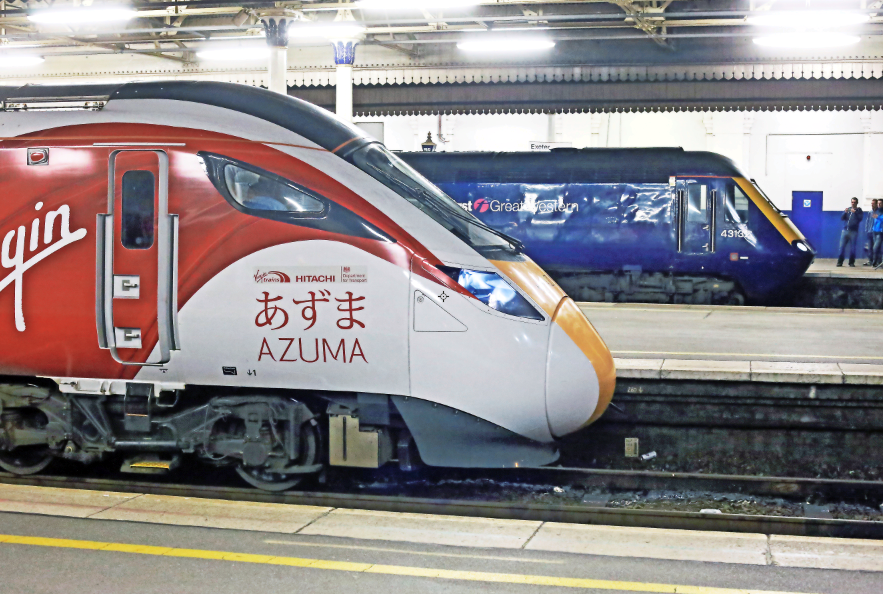
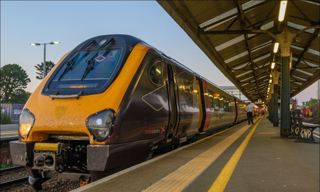
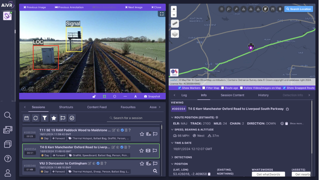
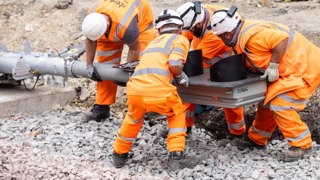
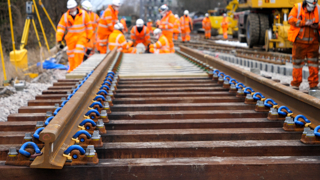










Login to comment
Comments
No comments have been made yet.